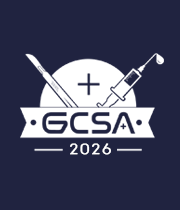Title : Clinical effect of simultaneous clipping of the M1-segment of the opposite middle cerebral artery for non-responsible aneurysms through the frontal keyhole approach
Abstract:
In some aneurysmal patients with SAH, IAs with surgical indications will be found on the contralateral side of the primary lesion, especially for aneurysms in the M1 segment of the contralateral MCA. If patients have obvious contraindications of interventional therapy, psychological barriers that they cannot accept multiple craniotomies, and they cannot identify MIAs with responsible lesions, it will be difficult for surgeons to make surgical diagnosis and treatment plans.
Method: From June 2018 to September 2020, our team admitted a total of 8 aneurysmal patients with SAH who had non-responsible aneurysms in the M1 segment of the contralateral MCA of responsible aneurysm clipping through unilateral keyhole approach. Fisher grading, Hunt-Hess grading, location of the responsible aneurysm, distance between contralateral MCA and the beginning of ipsilateral M1 segment (mm), orientation and size of the non-responsible aneurysm(mm), mRS score at discharge, MoCA score at discharge and so on were described to evaluate the efficacy of this surgical method.
Result: There were a total of 18 aneurysms in 8 patients, including 16 intracranial aneurysms requiring surgical treatment, including 4 cases of responsible hemorrhage aneurysms located in the internal carotid artery, 2 cases in anterior communicating artery and 2 cases in the MCA. The median length of the contralateral middle cerebral aneurysm from the beginning of the ipsilateral M1 segment was 15.4mm. The average diameter of nonresponsible aneurysms requiring treatment was 3.4*2.6mm. Postoperative cerebrovascular CTA showed that the intracranial artery at the distal end of the lesion moved naturally, the wall of the lesion was smooth, and there was no local stenosis or expansion of the lesion. MRS score of 4 patients was 0 at discharge. The score of 4 patients was 1. MoCA score at discharge suggested that 2 patients had mild cognitive impairment (< 26 points), and the remaining patients had normal cognitive function.
Conclusion: Unilateral keyhole approach for the treatment of contralateral non-responsible aneurysms has many advantages and is technically feasible, providing a new idea for the treatment of such complex lesions.



